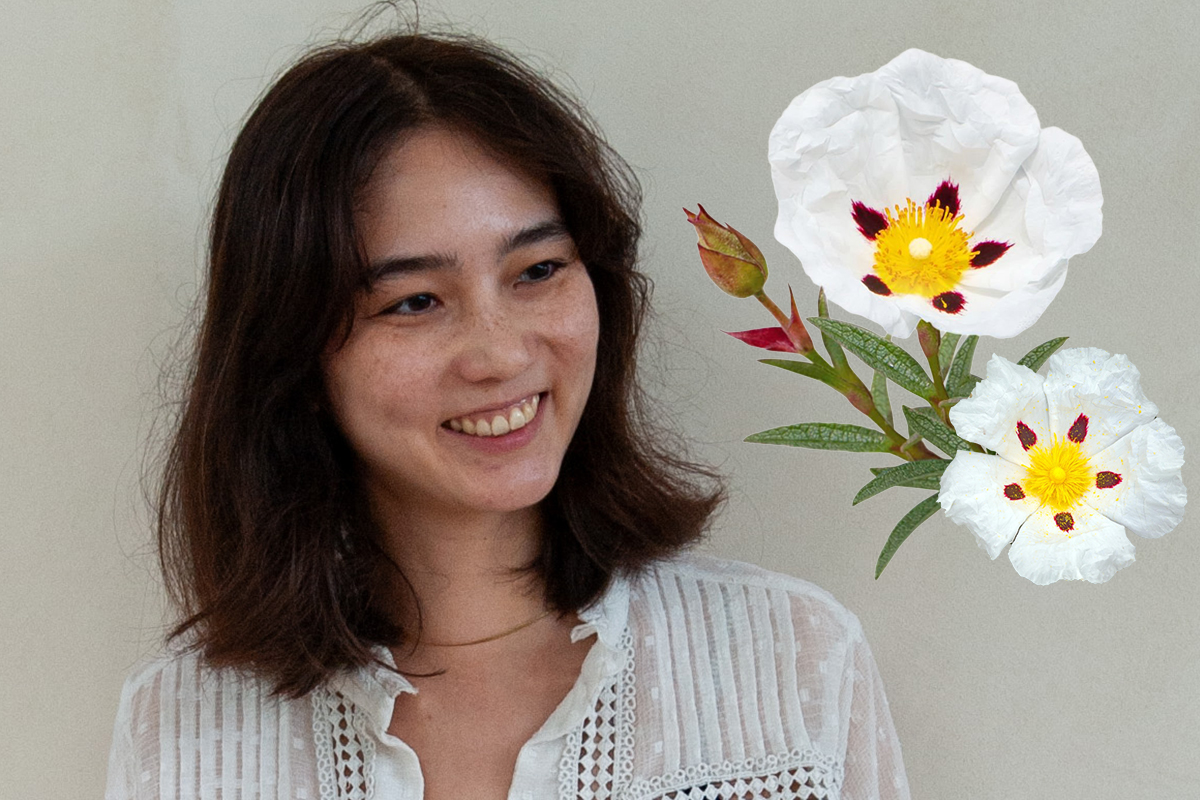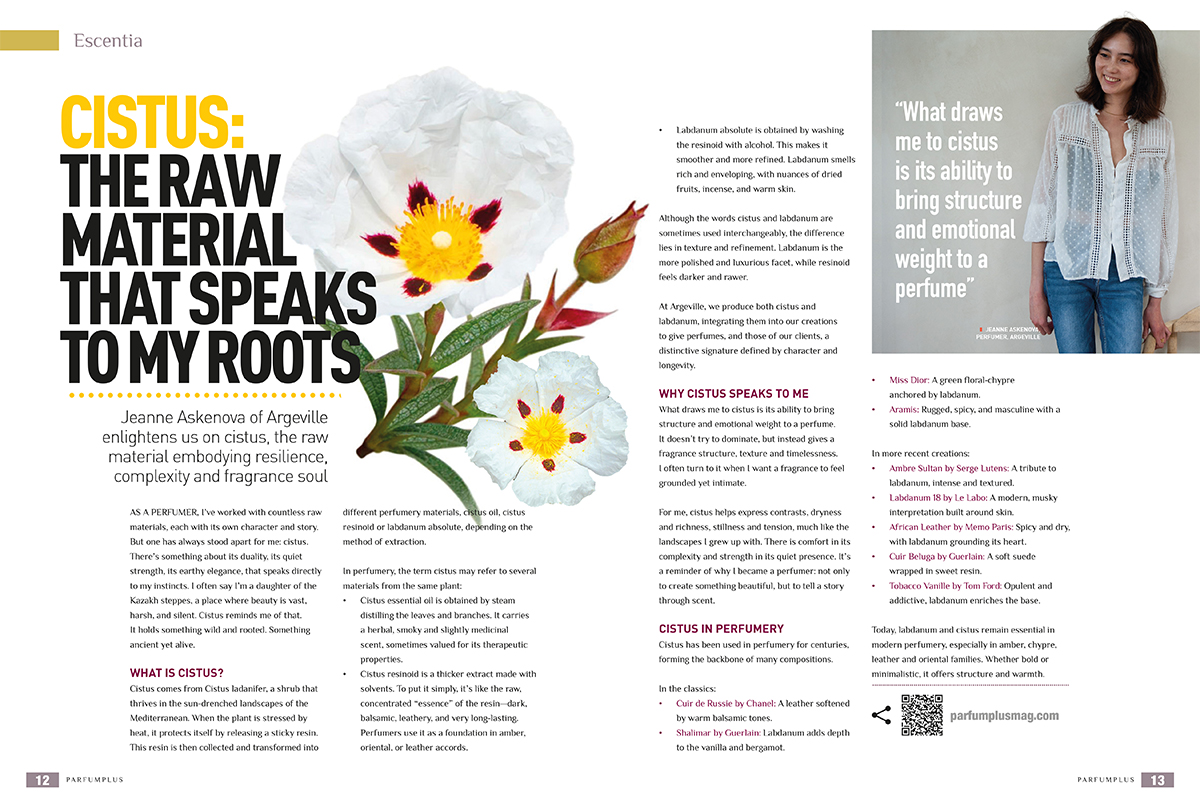Read this post in
 Arabic
Arabic

Cistus: The Raw Material That Speaks To My Roots
Jeanne Askenova of Argeville enlightens us on cistus, the raw material embodying resilience, complexity and fragrance soul
As a perfumer, I’ve worked with countless raw materials, each with its own character and story. But one has always stood apart for me: cistus.
There’s something about its duality, its quiet strength, its earthy elegance, that speaks directly to my instincts. I often say I’m a daughter of the Kazakh steppes, a place where beauty is vast, harsh, and silent. Cistus reminds me of that. It holds something wild and rooted. Something ancient yet alive.
What Is Cistus?
Cistus comes from Cistus ladanifer, a shrub that thrives in the sun-drenched landscapes of the Mediterranean. When the plant is stressed by heat, it protects itself by releasing a sticky resin. This resin is then collected and transformed into different perfumery materials, cistus oil, cistus resinoid, or labdanum absolute, depending on the method of extraction.
In perfumery, the term cistus may refer to several materials from the same plant:
- Cistus essential oil is obtained by steam distilling the leaves and branches. It carries a herbal, smoky, and slightly medicinal scent, sometimes valued for its therapeutic properties.
- Cistus resinoid is a thicker extract made with solvents. To put it simply, it’s like the raw, concentrated “essence” of the resin—dark, balsamic, leathery, and very long-lasting. Perfumers use it as a foundation in amber, oriental, or leather accords.
- Labdanum absolute is obtained by washing the resinoid with alcohol. This makes it smoother and more refined. Labdanum smells rich and enveloping, with nuances of dried fruits, incense, and warm skin.
Although the words cistus and labdanum are sometimes used interchangeably, the difference lies in texture and refinement. Labdanum is the more polished and luxurious facet, while resinoid feels darker and rawer.
At Argeville, we produce both cistus and labdanum, integrating them into our creations to give perfumes, and those of our clients, a distinctive signature defined by character and longevity.
Why Cistus Speaks to Me
What draws me to cistus is its ability to bring structure and emotional weight to a perfume. It doesn’t try to dominate, but instead gives a fragrance structure, texture and timelessness. I often turn to it when I want a fragrance to feel grounded yet intimate.
For me, cistus helps express contrasts, dryness and richness, stillness and tension, much like the landscapes I grew up with. There is comfort in its complexity and strength in its quiet presence. It’s a reminder of why I became a perfumer: not only to create something beautiful, but to tell a story through scent.
Cistus in Perfumery
Cistus (especially labdanum) has been used in perfumery for centuries, forming the backbone of many iconic compositions.
In the classics:
- Cuir de Russie by Chanel – A leather softened by warm balsamic tones.
- Shalimar by Guerlain – Labdanum adds depth to the vanilla and bergamot.
- Miss Dior by Dior – A green floral-chypre anchored by labdanum.
- Aramis – Rugged, spicy, and masculine with a solid labdanum base.
In more recent creations:
- Ambre Sultan by Serge Lutens – A tribute to labdanum, intense and textured.
- Labdanum 18 by Le Labo – A modern, musky interpretation built around skin.
- African Leather by Memo Paris – Spicy and dry, with labdanum grounding its heart.
- L’Ombre Fauve by Parfum d’Empire – Deep, musky, mysterious.
- Cuir Beluga by Guerlain – A soft suede wrapped in sweet resin.
- Tobacco Vanille by Tom Ford – Opulent and addictive, labdanum enriches the base.
Today, labdanum and cistus remain essential in modern perfumery, especially in amber, chypre, leather and oriental families. Whether bold or minimalistic, it offers structure and warmth.
Read this post in
 Arabic
Arabic





